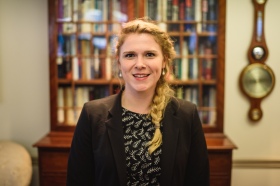
For decades medical residents have put themselves into two camps: “black clouds” and “white clouds.” Black-cloud residents carry with them the bad luck of consistently getting a patient load that requires more work; the perceived workload intensity and stress may keep them pacing the halls at night, while their white-cloud counterparts are likely to sleep peacefully while on call.
Does this cloud status actually exist, though? Adam Was, MD, fourth year Stanford resident of pediatrics and anesthesia, decided to find out. The results of his study were just published in Pediatrics.
“The study was inspired by my late-night argument with other interns about our workloads,” said Was. “We commonly discuss what type of cloud we have, meaning what kind of workload. So one of the interns said his workload was really high, but someone else argued that we all have the same workload and he was just complaining about it more. I realized that we could do an objective, rigorous study of actual workloads to get a real answer.”
With the help of KT Park, MD, assistant professor of pediatric gastroenterology and senior author of the study, Was measured the workload of twenty-six pediatric residents during the six core inpatient rotations of their intern year — to make sure they were comparing “like to like.” Using the Stanford Children’s Health research database, they quantified the workload intensity of each of the residents based on the number of electronic notes and orders that they wrote while in the hospital. Was explained:
“ We wanted to focus on objective data that described the work done at the hospital, as opposed to just the number of hours spent there. Residents do a lot of things that aren’t captured in electronic notes and orders, but we found this data to be the most robust and representative.”
And the outcome? The differences are real. The researchers found a very significant variability of workload intensity between the residents. High-workload residents wrote 91 percent more orders and 19 percent more notes than low-workload residents. Here’s Park:
“I really thought that we were going to conclusively lay to rest this idea that there is statistically significant workload variability between residents. I was very surprised. We did sophisticated mathematical models and there is no way around it — there are high-workload and low-workload residents. There is no ethological explanation right now, and it remains a big question mark especially for program directors.”
Thinking through the study’s implications from a program director’s point of view was the main role of the third author, Becky Blankenburg, MD, clinical associate professor of pediatrics and pediatric residency program director, who thinks the results can guide residency directors. “This data provides more information for resident assessments and will allow us to better individualize the residents’ curriculum based on what they’ve really been exposed to,” she said.
Determining the root causes behind this workload variability is beyond the scope of their study. However, the authors have a few of their own theories.
One belief: high-workload or black cloud residents behave differently than their white cloud colleagues. For example, some black cloud residents may be inefficient, while others may create extra work for themselves. And some white cloud residents may need to be more vigilant.
“I would like to get into the heads of the residents in real time,” Park said. “As they put in that note or order or take that phone call, what is the impetus? From my observation, anxiety and perfectionistic tendencies drive them to do more than what’s necessary for effective patient care.”
Blankenburg agreed, “Some residents early on learn to look at the big picture and some see only the trees without seeing the forest. Another important factor is how comfortable people are with ambiguity. If you’re able to deal with ambiguity better, you might not order as many tests.”
The researchers are contemplating how best to use this information and how to design a follow-up study to understand the root causes of resident workload variability. One idea is to somehow incorporate peer evaluations, since their study found self-assessments to be inaccurate. “I think peers would do the best job of picking up on cloud status or workload intensity,” Blankenburg said.
Although successful, did the study settle the late night argument that inspired it?
“The study data was annonymized, so we don’t know who was who,” said Was. “So I never got to settle my original argument of whether I was doing more or less work. Before the study, I thought I was a black cloud. Afterwards, I feel like I’m a confused and possibly grey cloud.”
This is a reposting of my Scope blog story, courtesy of Stanford School of Medicine.



